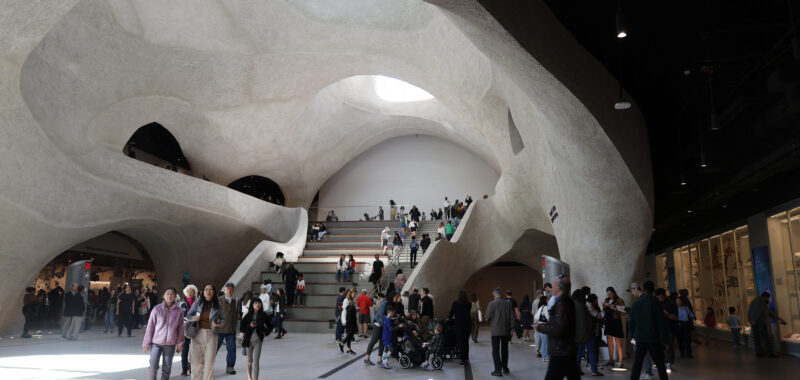New York City’s American Museum of Natural History (AMNH) is repatriating the remains of 124 Native individuals and 90 Native cultural items as it faces increased pressure to return the thousands of human remains in its holdings. The news follows an updated and stricter set of federal rules under the 1990 Native American Graves Protection and Repatriation Act (NAGPRA) that went into effect at the beginning of this year.
Last Thursday, July 25, AMNH President Sean Decatur updated staff on the institution’s repatriation efforts in a letter first reported by the New York Times. According to his announcement, AMNH has conducted “more than 400 consultations, with approximately 50 different stakeholders, including hosting seven visits of Indigenous delegations and eight completed repatriations” in 2024.
A Hyperallergic investigation last year found that the museum’s collection of around 12,000 remains from communities within and outside the United States includes the bodies of Black New Yorkers acquired from medical schools in the late 1940s. Collected across 150 years of acquisitions, donations, and expeditions, a majority of these remains originate from Indigenous or colonized communities and lack identification.
Earlier this year, AMNH joined other museums around the country in removing swaths of Indigenous artifacts from public view by closing two galleries dedicated to Native American history, in order to abide by the updated NAGPRA regulations. The newly enacted rules now mandate institutions to “obtain free, prior and informed consent” from tribal communities “before allowing any exhibition of, access to, or research on human remains or cultural items.” Despite these recent regulations, tribal community members have continued to raise skepticism over institutional delays in returning the remains of their ancestors, while issues like contaminated collections and damage to cultural objects have also posed complications.
In an email to Hyperallergic, an AMNH representative noted that the museum’s recent repatriations do not account for objects that were on display in its since-closed galleries, as “reviews and consultations for [these items] are ongoing.”
The Federal Register shows that in April, AMNH identified the remains of three individuals affiliated with the Santa Ynez Band of Chumash Mission Indians of the Santa Ynez Reservation, situated in southern California. Their bodies were taken from San Miguel Island and Santa Rosa Island, located off the Santa Barbara coast. In the late 19th century, the museum acquired one set of remains from James Terry, a curator in its anthropology department, and the two others from Felix von Luschan, an Austrian-born anthropologist and ethnologist whose private collection of more than 5,000 human skulls was sold to AMNH after his death. That same month, AMNH identified the remains of another four individuals and one associated funerary object affiliated with seven tribal communities in California, including the Santa Ynez tribe.
Today, many families of individuals in AMNH’s collections still have not received information about their ancestors’ whereabouts, according to recent reports.

